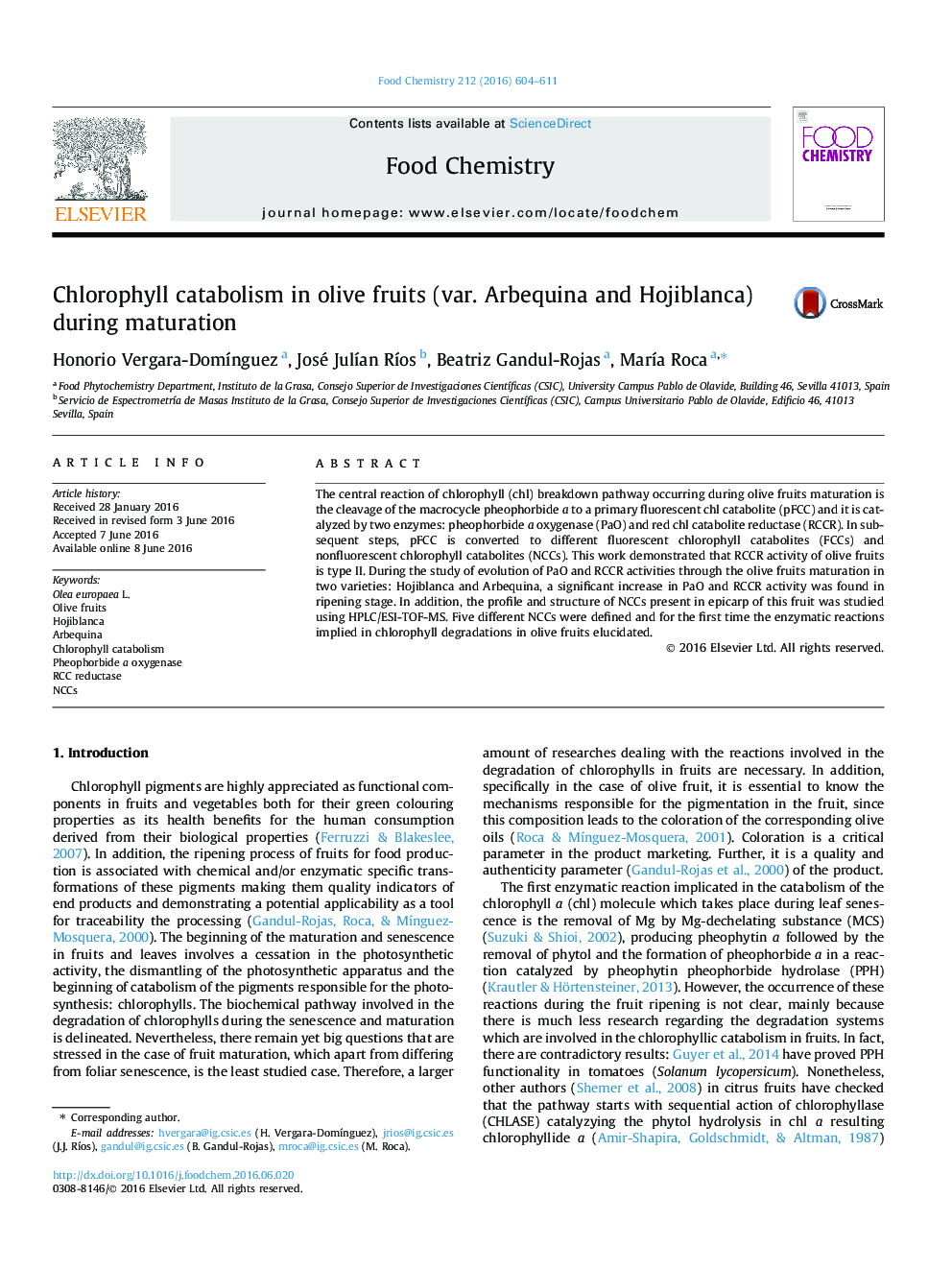| Article ID | Journal | Published Year | Pages | File Type |
|---|---|---|---|---|
| 1185080 | Food Chemistry | 2016 | 8 Pages |
•It has been shown that RCCR activity in olive fruits is type II.•PaO and RCCR activity developed an evolution during the ripening of olive fruits.•Five NCCs have been identified by HPLC/ESI-TOF-MS2 in olive fruits.•Differences in profile of NCCs to varietal level were found for the first time.•In olive fruits the catabolic pathway is similar as in foliar senescence.
The central reaction of chlorophyll (chl) breakdown pathway occurring during olive fruits maturation is the cleavage of the macrocycle pheophorbide a to a primary fluorescent chl catabolite (pFCC) and it is catalyzed by two enzymes: pheophorbide a oxygenase (PaO) and red chl catabolite reductase (RCCR). In subsequent steps, pFCC is converted to different fluorescent chlorophyll catabolites (FCCs) and nonfluorescent chlorophyll catabolites (NCCs). This work demonstrated that RCCR activity of olive fruits is type II. During the study of evolution of PaO and RCCR activities through the olive fruits maturation in two varieties: Hojiblanca and Arbequina, a significant increase in PaO and RCCR activity was found in ripening stage. In addition, the profile and structure of NCCs present in epicarp of this fruit was studied using HPLC/ESI-TOF-MS. Five different NCCs were defined and for the first time the enzymatic reactions implied in chlorophyll degradations in olive fruits elucidated.
